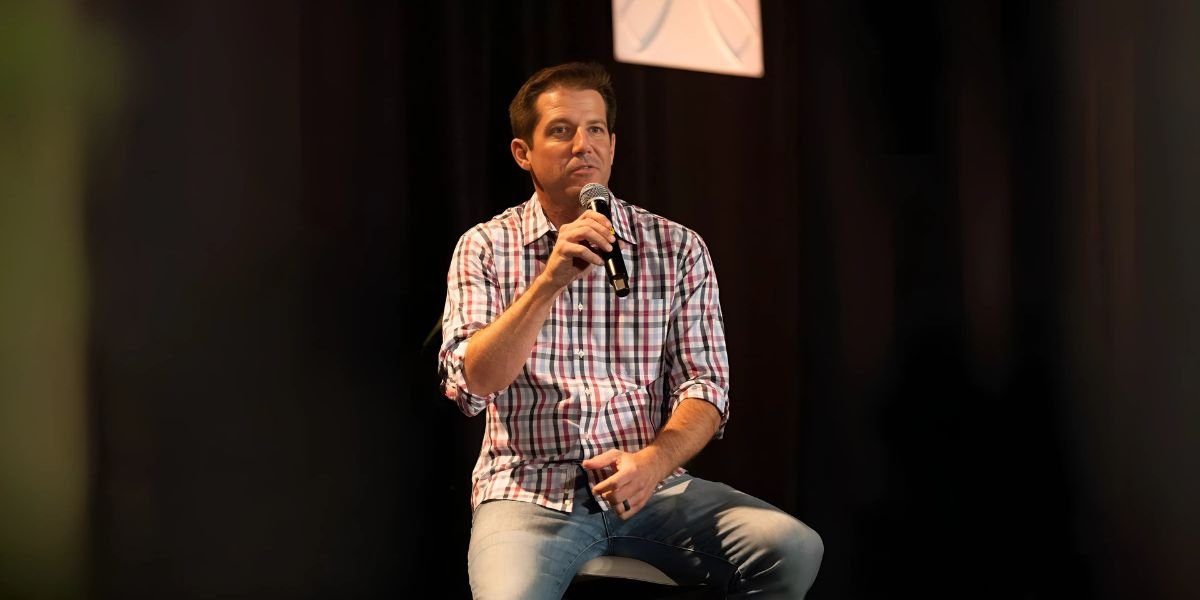By: James Caldwell
In his debut novel, Tradesmen: Protecting Our Homes and Way of Life, Joey Stefaniak introduces readers to a world where blue-collar skill meets high-stakes thriller action. The story follows a group of ex-military tradespeople—electricians, carpenters, plumbers, and builders—who leverage their unique abilities to combat crime and domestic threats. But beyond its action-packed plot, Tradesmen is a tribute to often-overlooked heroes: the men and women whose work sustains communities every day.
Stefaniak, a Boston native and Northeastern University graduate, drew inspiration for the book from his early fascination with family members in the trades. “As a kid, I had many uncles who were in the trades, and I always followed them around, fascinated by their tools and talents,” he recalls. Although he himself is not a tradesman, Stefaniak spent years working alongside skilled individuals building houses and barns. Many of these were veterans, whose military experience honed not only their craft but also their discipline, problem-solving skills, and physical capabilities. From this combination of trade expertise and tactical know-how, Stefaniak imagined a novel world in which tradespeople could operate as unexpected defenders against crime and terrorism. “They could seamlessly move through homes, businesses, and other locations without raising suspicions, perfectly placed to carry out a mission,” he explains.
The novel centers on veterans and tradespeople as protagonists, a choice Stefaniak describes as intentional and meaningful. “Blue-collar workers, including many veterans, play a crucial role in supporting our communities,” he says. “I wanted to create a forum to highlight their contributions and hard work.” Through these characters, he emphasizes the ingenuity, grit, and loyalty that often go unrecognized in everyday life, painting a picture of heroism rooted not in fame or rank but in skill and courage.
One of the book’s distinctive concepts is what Stefaniak calls “toolbelt warfare.” Drawing from real-life experiences observing tradespeople at work, he envisioned everyday tools as instruments of strategy. “Their vehicles carry a wide array of dangerous items—torches, sharp objects, cutting tools, even the vehicles and heavy equipment themselves,” he notes. This inventive approach not only drives the narrative’s tension but also symbolizes the resourcefulness and adaptability inherent to the trades.
Tradesmen is unapologetically raw, a tone Stefaniak crafted to reflect the real-world stakes his characters face. “I want readers to come away with an awareness that many crimes and violent plots slip under the radar—sometimes because there are simply too many perpetrators, other times because law enforcement resources are stretched thin,” he explains. The story imagines a world where wrongdoers are stopped and justice prevails, echoing the community-protective spirit of America’s earliest local militias.
While the novel is steeped in action, much of it is grounded in real-life inspiration. “Many of the characters in Tradesmen are inspired by real people I’ve met and worked alongside,” Stefaniak shares. “While they’ve been fictionalized, many of the storylines and events are loosely drawn from my own life experiences.” This blending of authenticity and imagination gives the novel a unique texture, offering readers both excitement and credibility.
Core themes of justice, loyalty, and grit permeate the story, reflecting Stefaniak’s familial background. Though he did not serve in the military himself, many of his relatives, including his grandfathers and father, did. “I’ve always admired—and, in some ways, envied—their opportunity to serve their country,” he says. In Tradesmen, he channels that spirit, portraying characters who build a culture where loyalty, ethical action, and courage are non-negotiable.
Writing a thriller grounded in the working-class experience came with challenges. “A major challenge was immersing myself in how tradespeople work,” Stefaniak admits. Another difficulty was balancing the story’s raw, sometimes violent moments with humor and levity. “Achieving that delicate balance between grit and levity was one of the hardest parts of writing the book,” he notes. The result is a story that feels intense yet relatable, thrilling yet human.
The novel also resonates with contemporary cultural and political conversations, particularly around issues of justice and accountability. While the story includes a subplot involving an illegal immigrant engaged in criminal activity, Stefaniak clarifies that the focus is on stopping bad actors, not disparaging entire groups. “The country was built on the backs of immigrants,” he says. “I hope readers will understand that the characters in the book are after bad people, not immigrants in general.”
Fans of Tradesmen can also look forward to future installments. Stefaniak is actively developing ideas for a sequel, seeking feedback from tradespeople and readers alike. His goal is to continue exploring the world of these “real heroes” and the unique ways they protect their communities.
For aspiring writers inspired by the unsung heroes around them, Stefaniak offers practical advice: “Stay true to your core beliefs. Jot down your ideas and envision a storyline that resonates with you. Imagination is the foundation of success in any path you choose.”
Ultimately, Tradesmen is more than an action thriller; it’s a celebration of grit, skill, and service. Joey Stefaniak has crafted a story that elevates everyday heroes, reminding readers that courage and resourcefulness are often found in the hands of those who quietly keep society running. With engaging characters, inventive action, and an unapologetic tone, Tradesmen offers both entertainment and tribute, a novel that recognizes the power of skill, loyalty, and the ordinary individuals who rise to extraordinary challenges.
Disclaimer: The views and opinions expressed in this article are those of the author and do not necessarily reflect the views or opinions of the publication. The content provided is for informational purposes only and is not intended to endorse any specific products, services, or individuals mentioned. All trademarks, service marks, and other proprietary content referenced in this article are the property of their respective owners. Readers are encouraged to exercise discretion and consider the broader context when engaging with any themes, characters, or narratives discussed herein. This article is a reflection of the author’s creative work and does not claim to represent the experiences or perspectives of all individuals in related fields.













